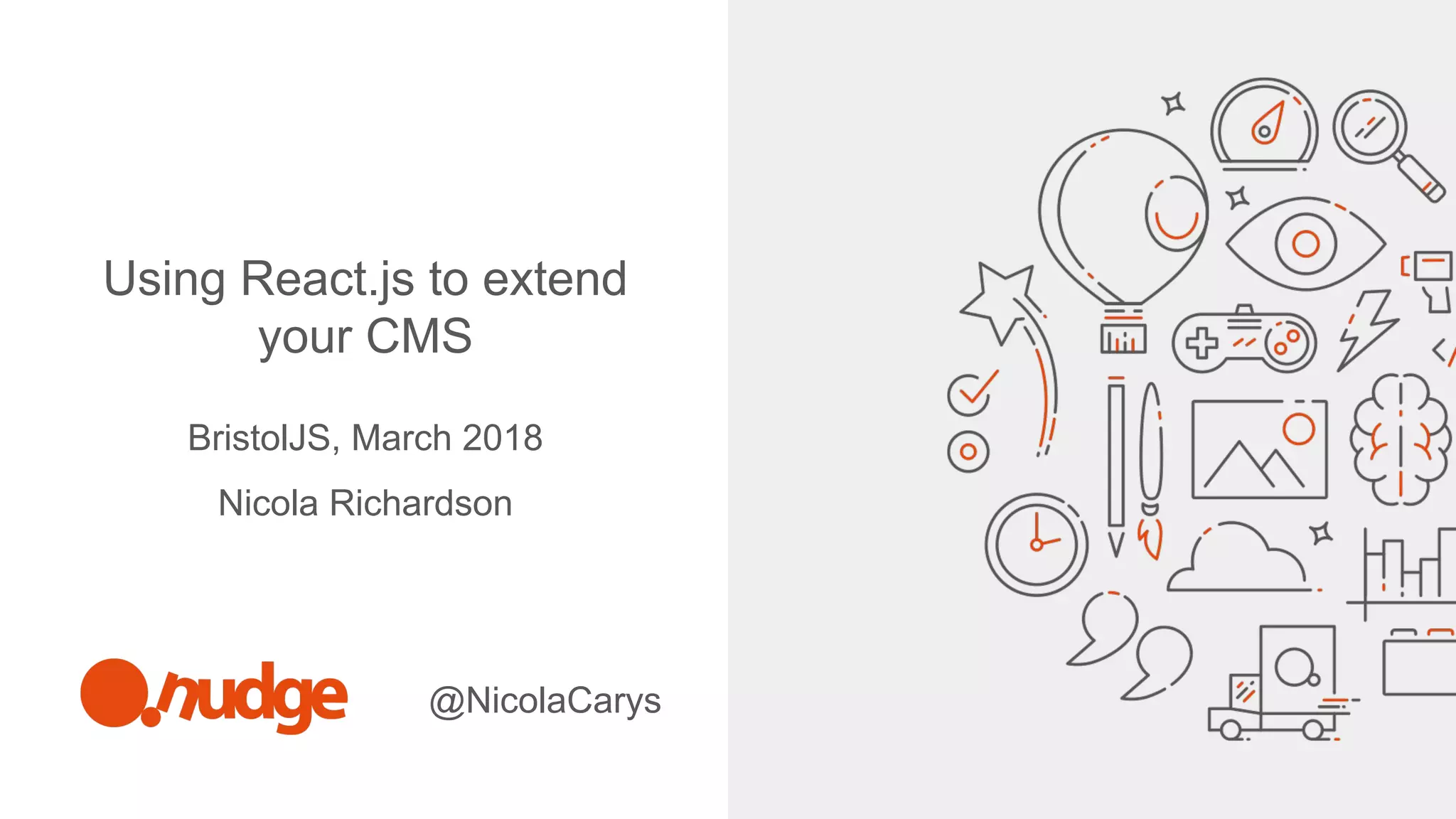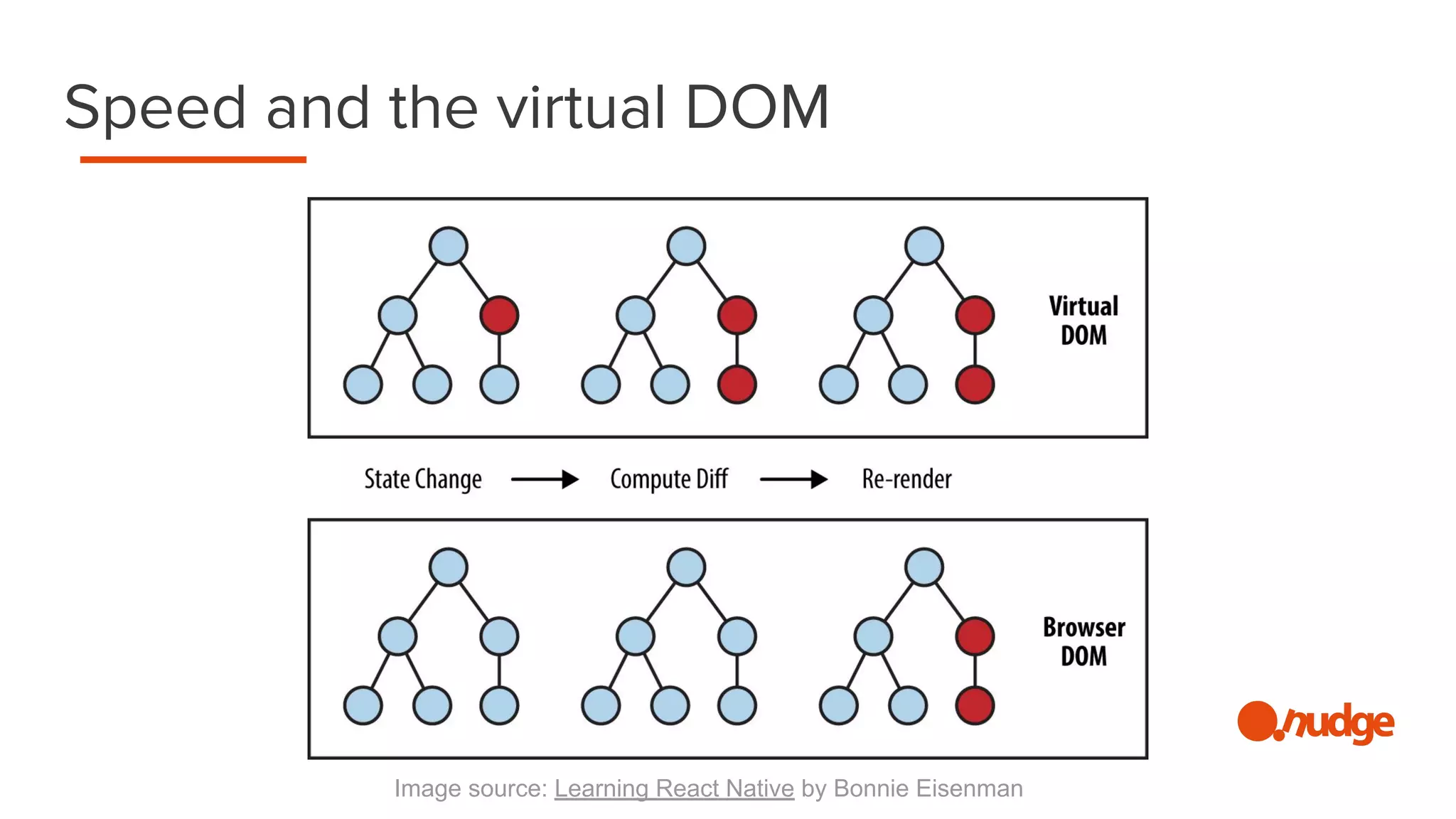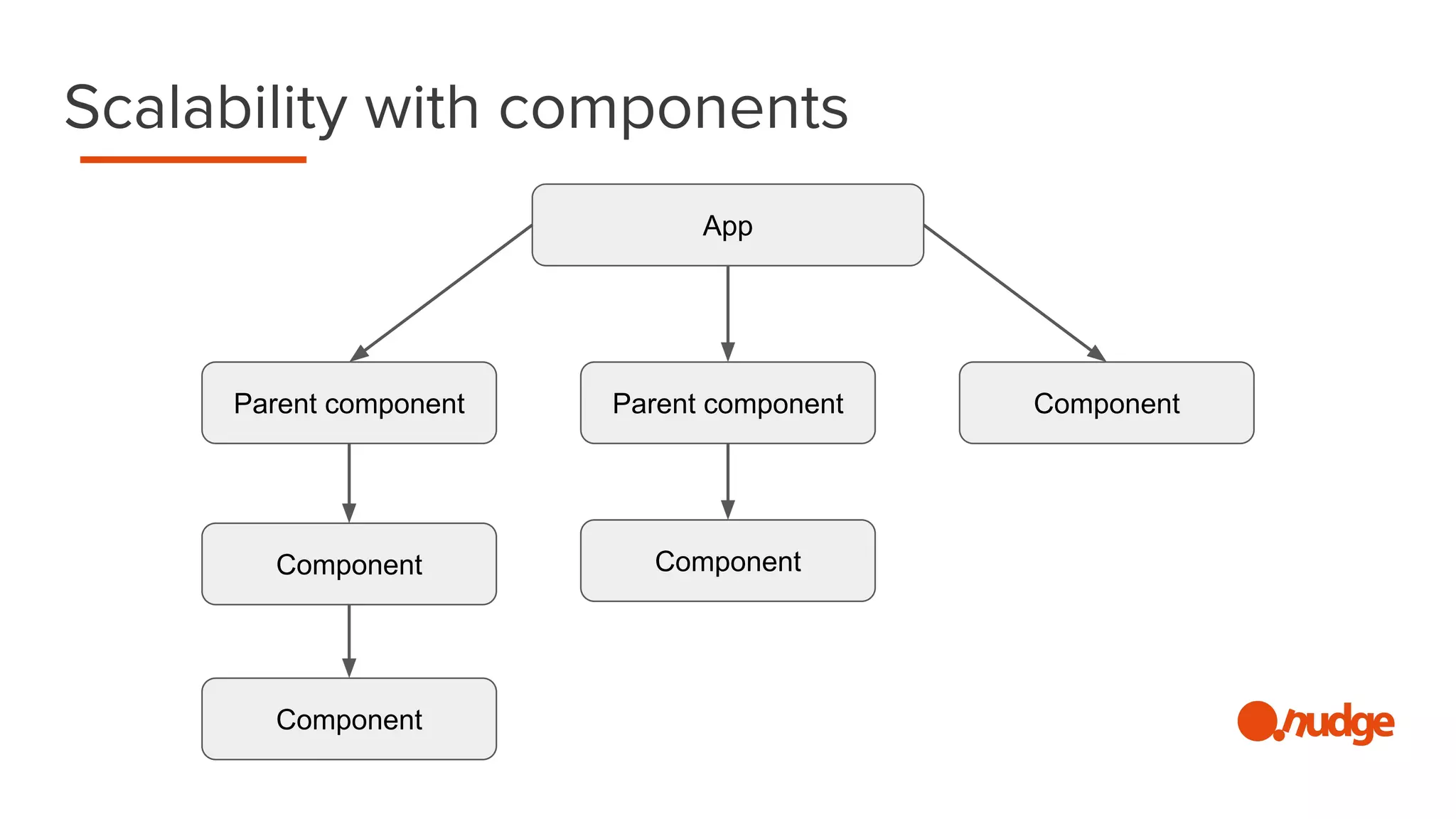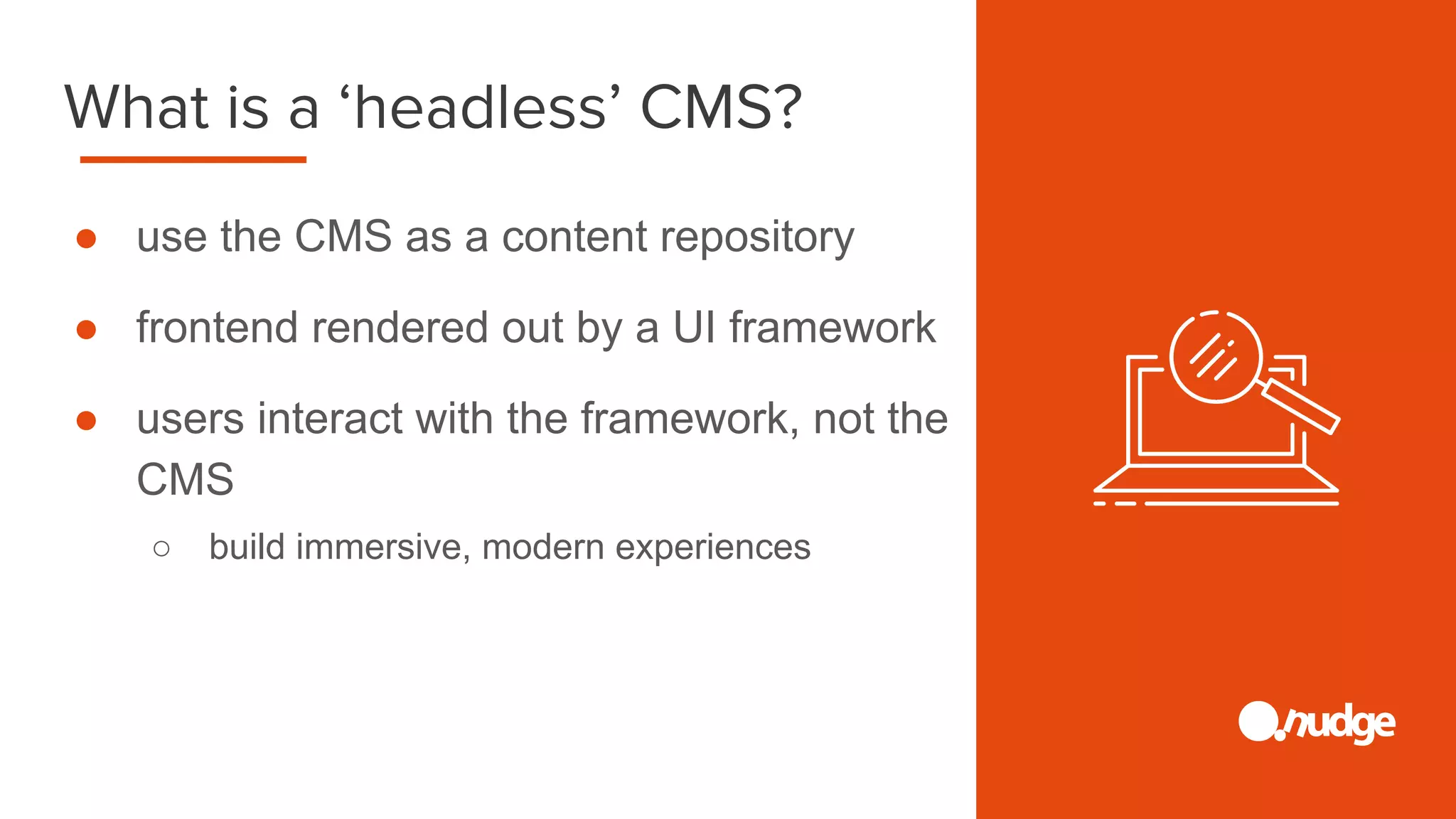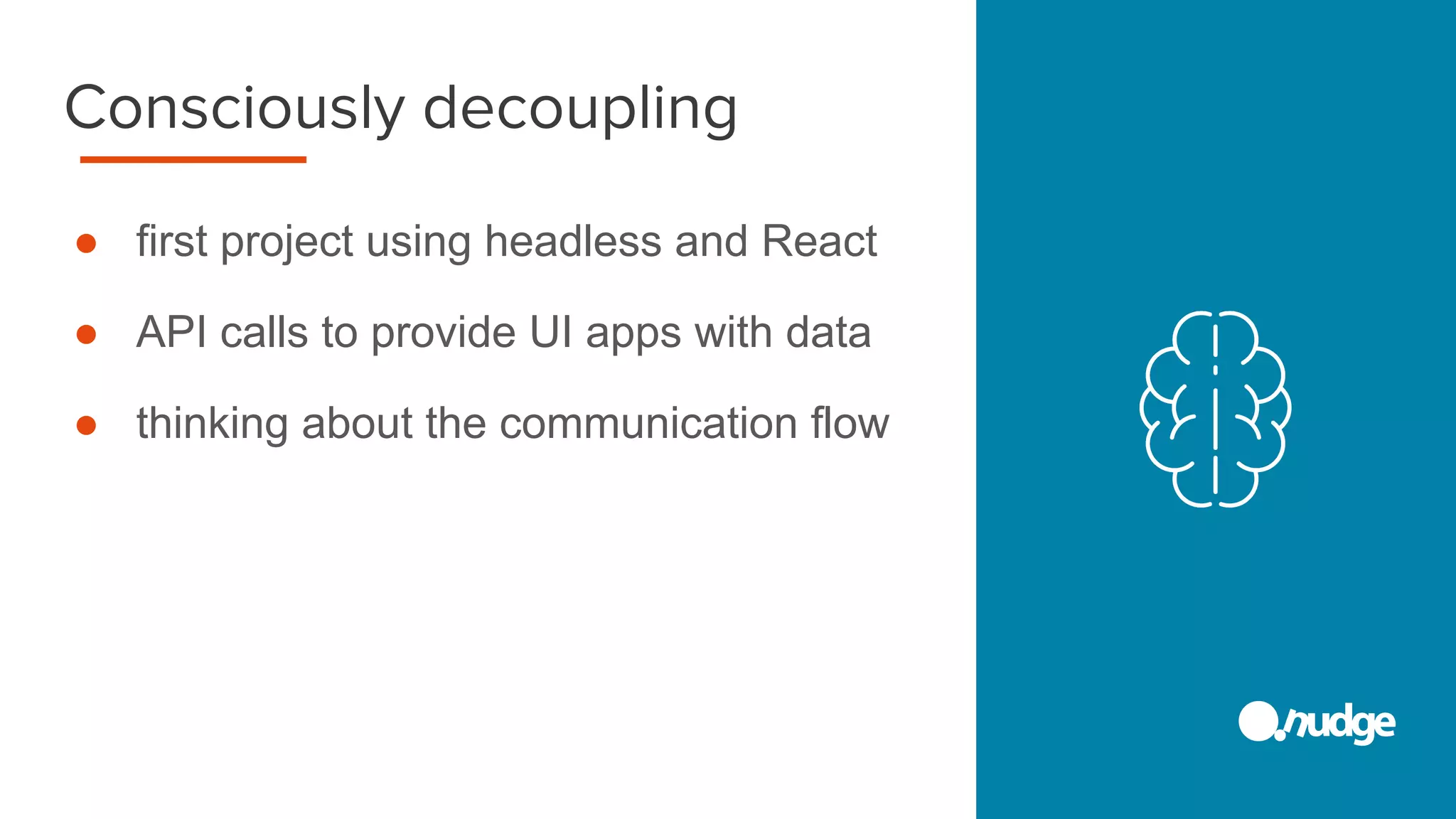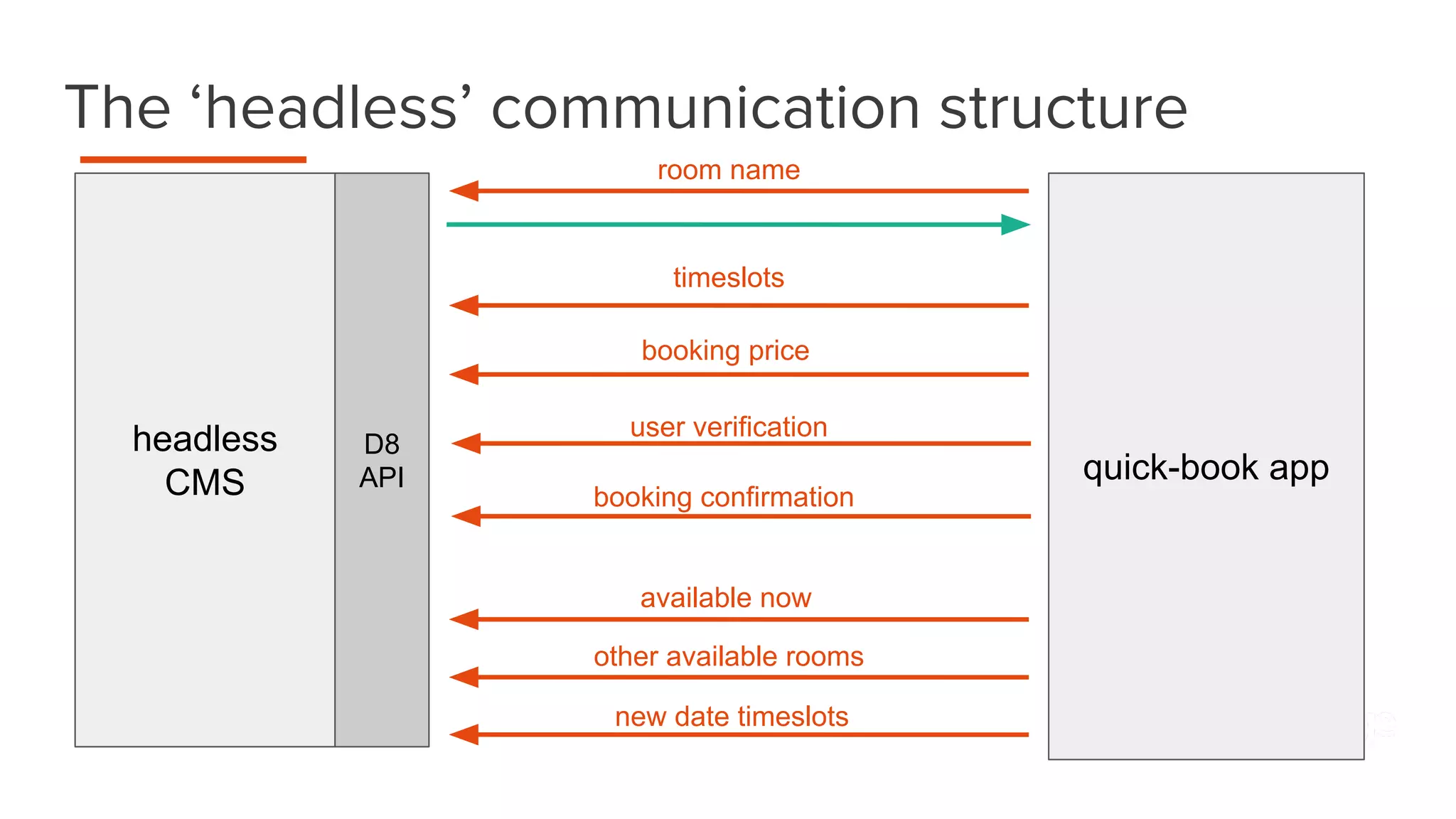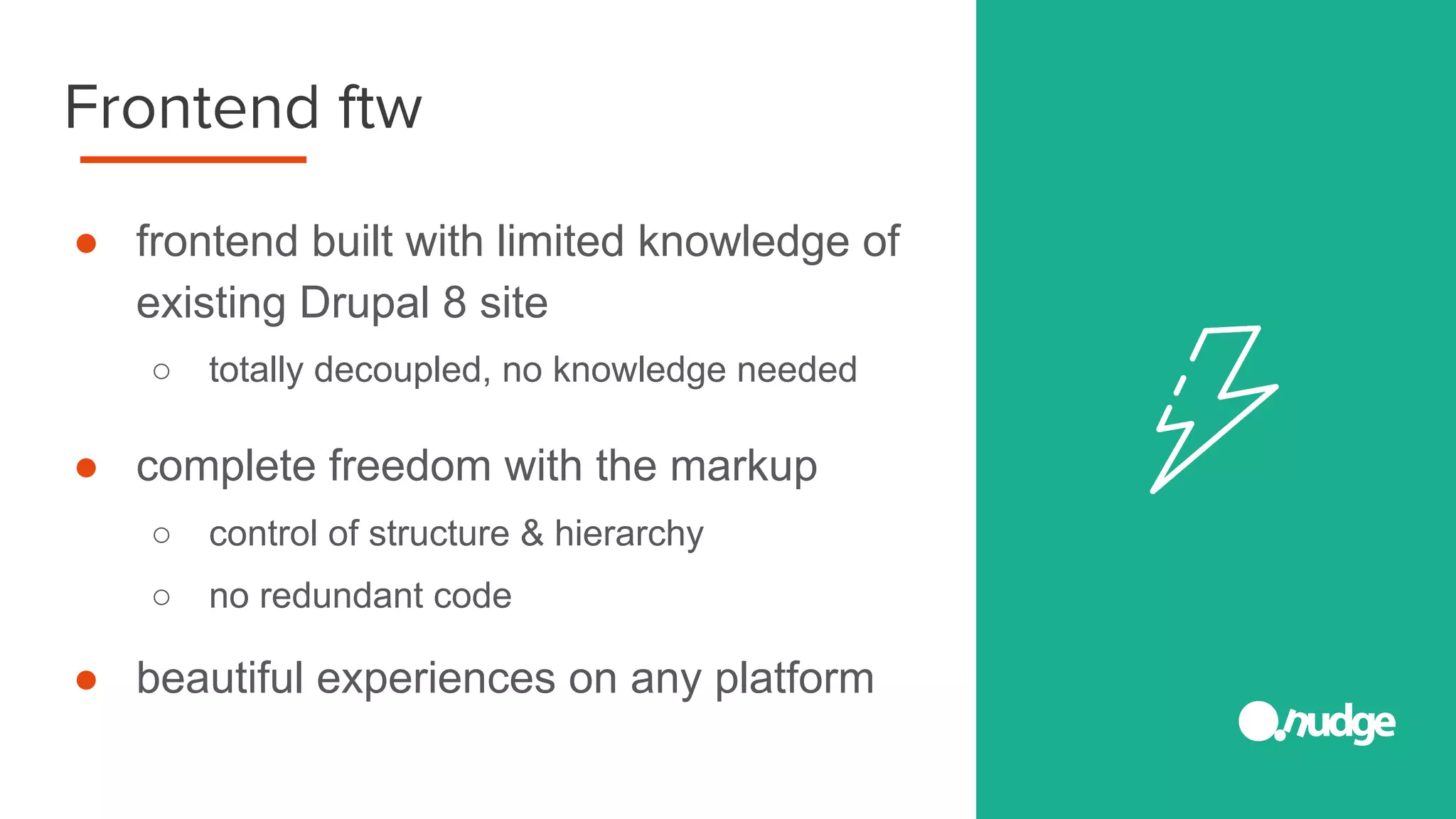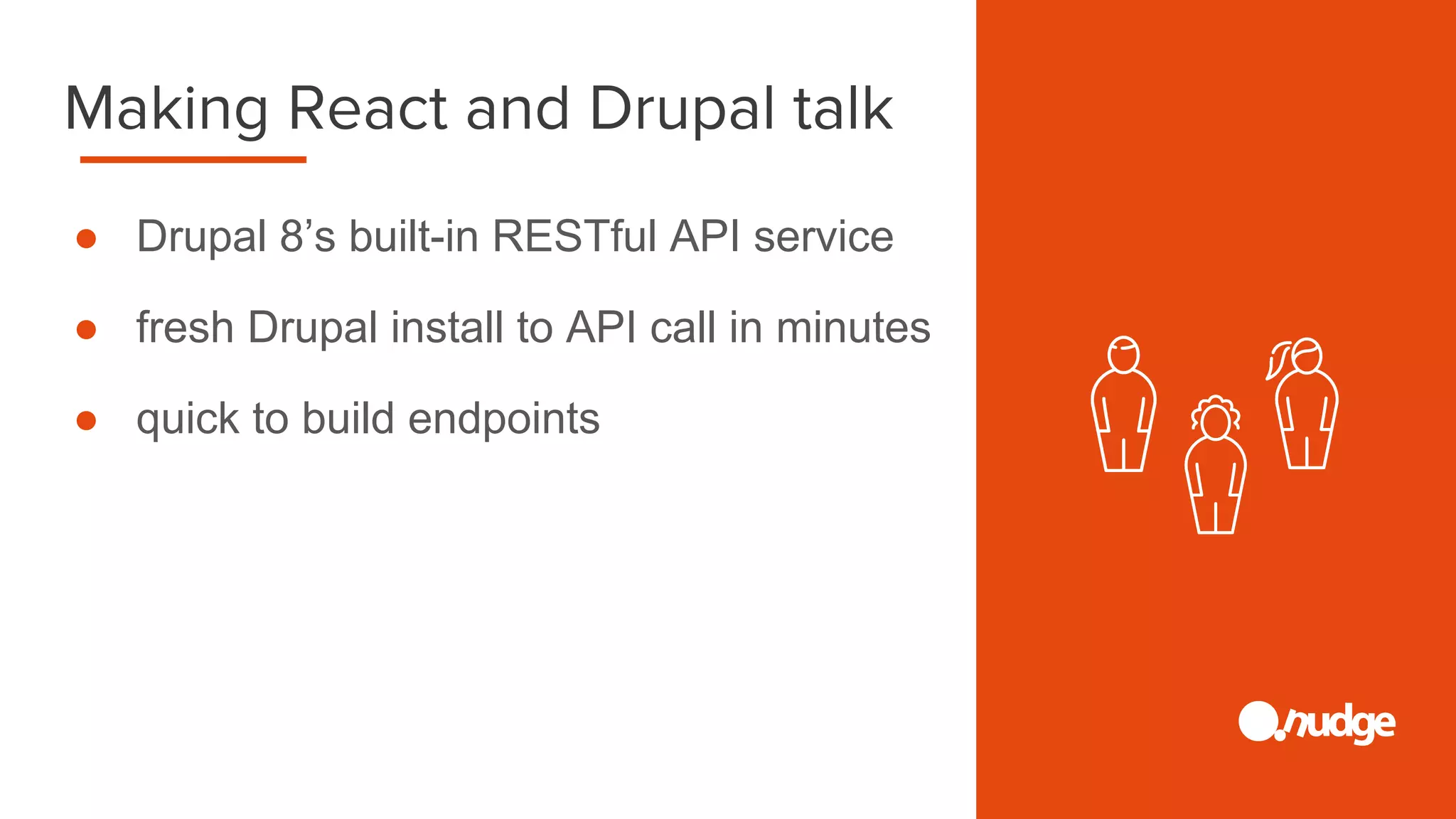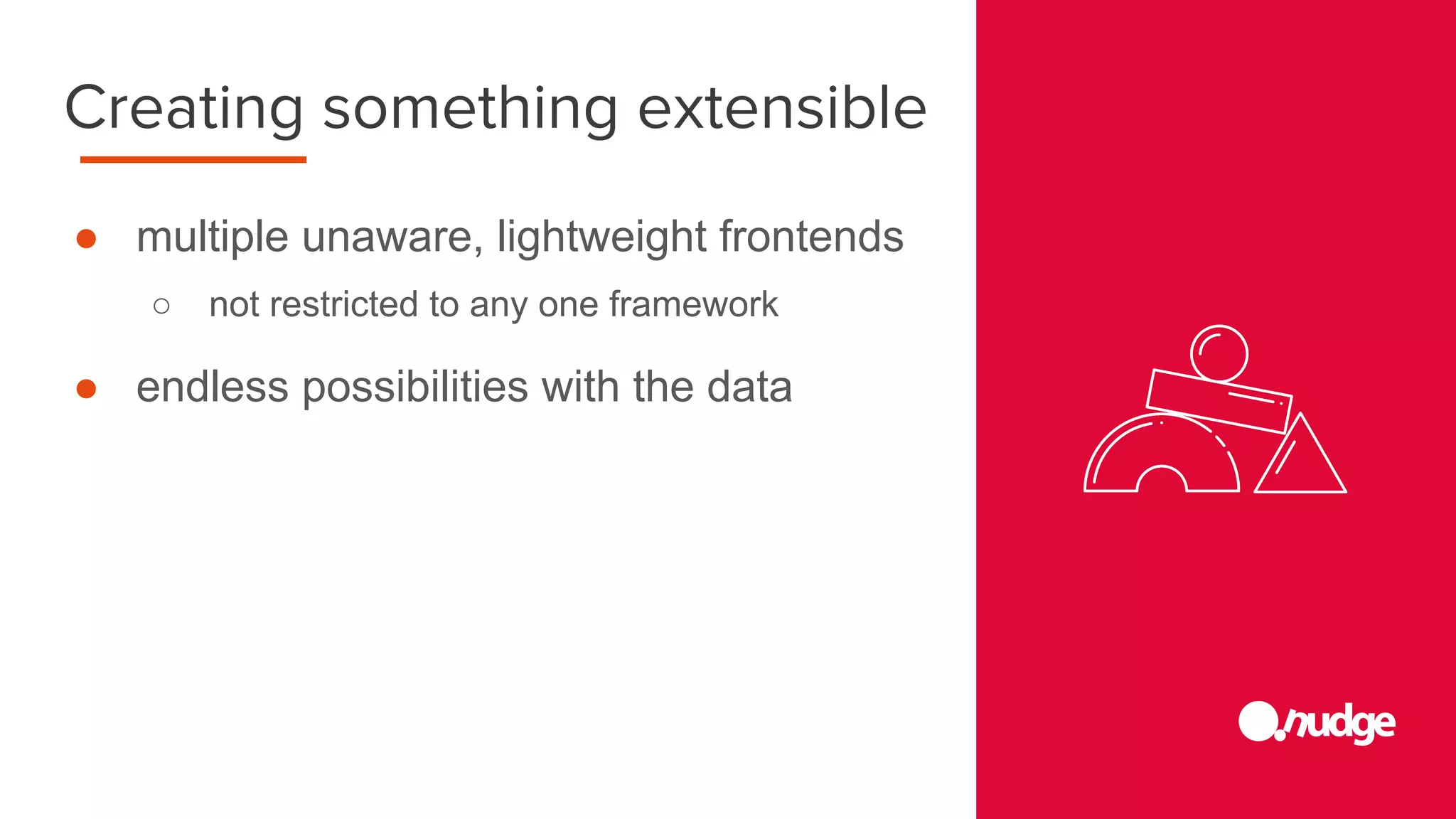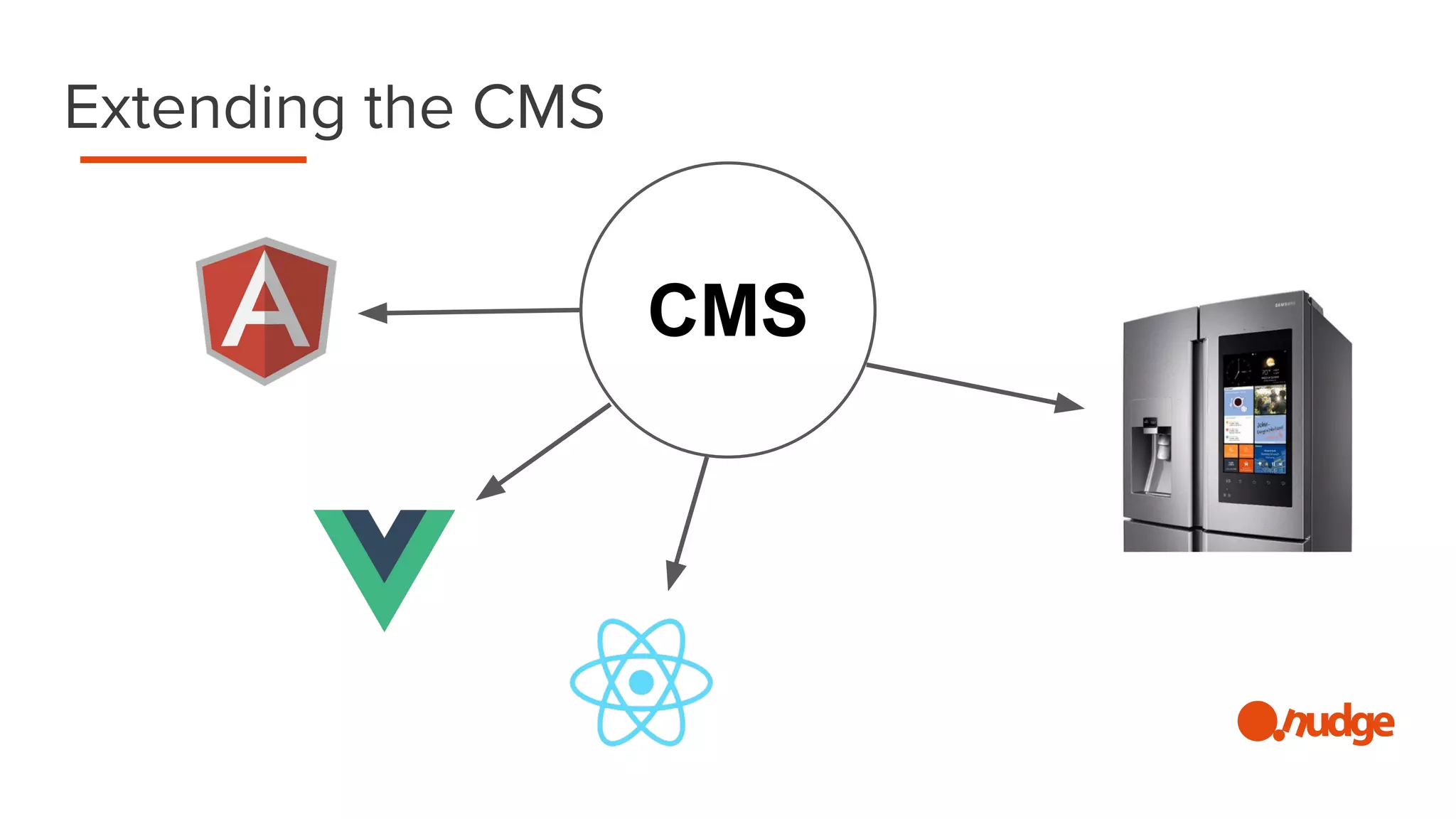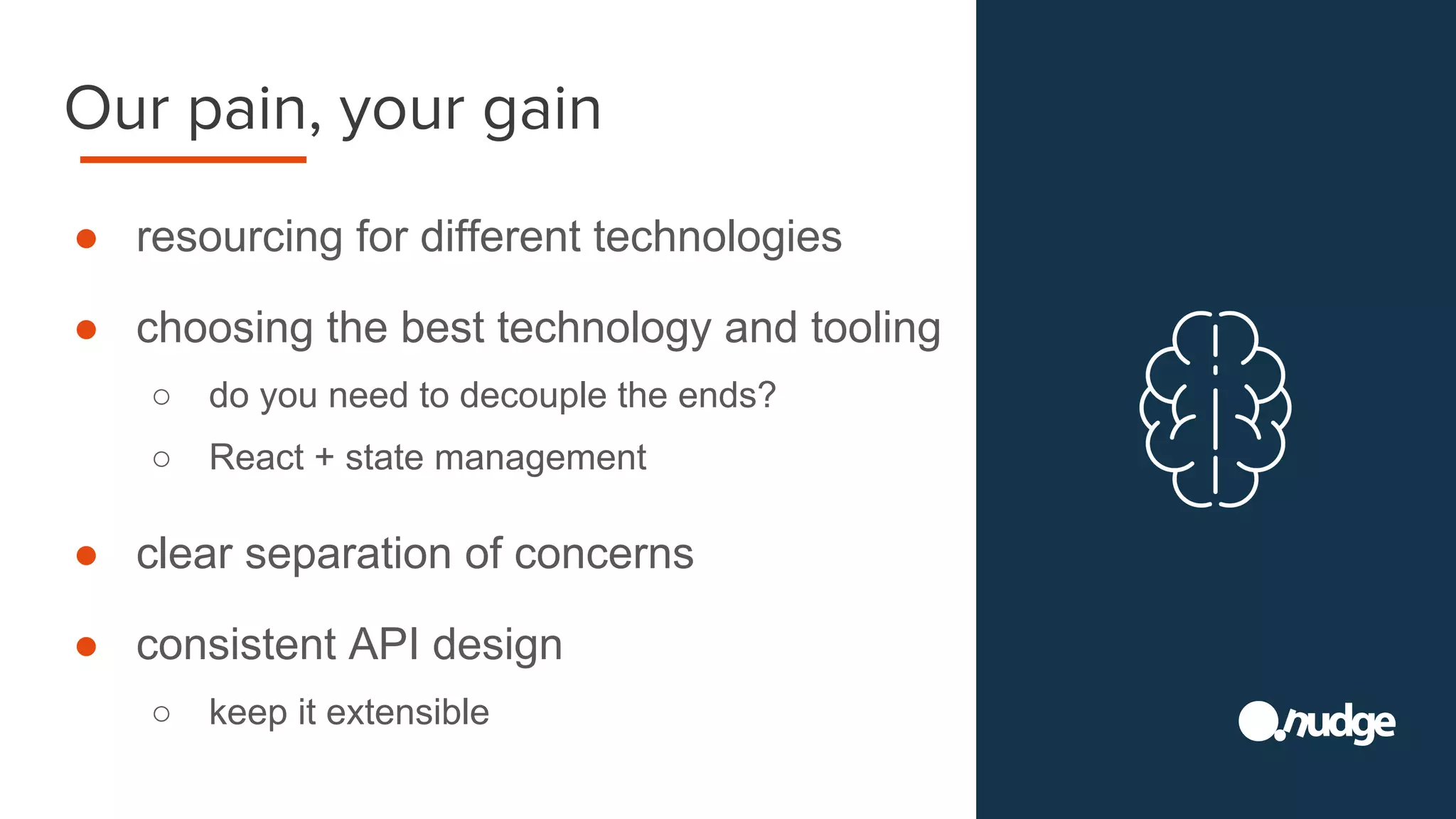The document discusses using React.js to enhance the Drupal CMS, focusing on the advantages of a headless CMS approach. It emphasizes the flexibility and scalability of combining a content repository with various frontend applications, leading to better user experiences. The author shares their experiences with creating decoupled, immersive web apps that communicate with Drupal's built-in RESTful API.
